GOD’S OIL & LUBE SHOP (1903)
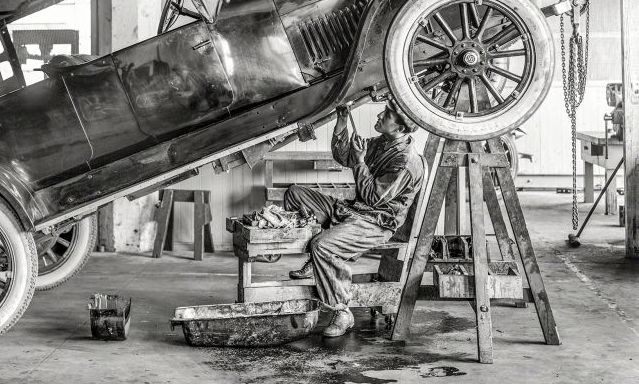
Brownstone Detectives investigates the history of our clients’ homes.
The story you are about to read was composed from research conducted in the course of one of those investigations.
Do you know the history of YOUR house?
********************************************************************************************************************************
By 1903, builder Wilfred Burr had moved into his second decade of house building, putting up brownstones and limestones around Stuyvesant Heights at a quick clip. Within his first decade in the profession he had managed to build hundreds of them.
He was just 35, and was living with his wife, son, two daughters, and his mother-in-law (and two Swedish servants) at 555 Jefferson Avenue, but he was starting to become restless with the monotony.
Able to purchase lots, put up buildings and sell them – almost with his eyes closed by this point – he began to look for something additional to do with his life outside of the construction business, seeking some way to spend his expendable income on an investment that excited him – something that was new and different.
The new automobiles held that cache. They were fast, they were complicated – and his wife did not like him driving them.
BUILDING THE AUTOMOBILE
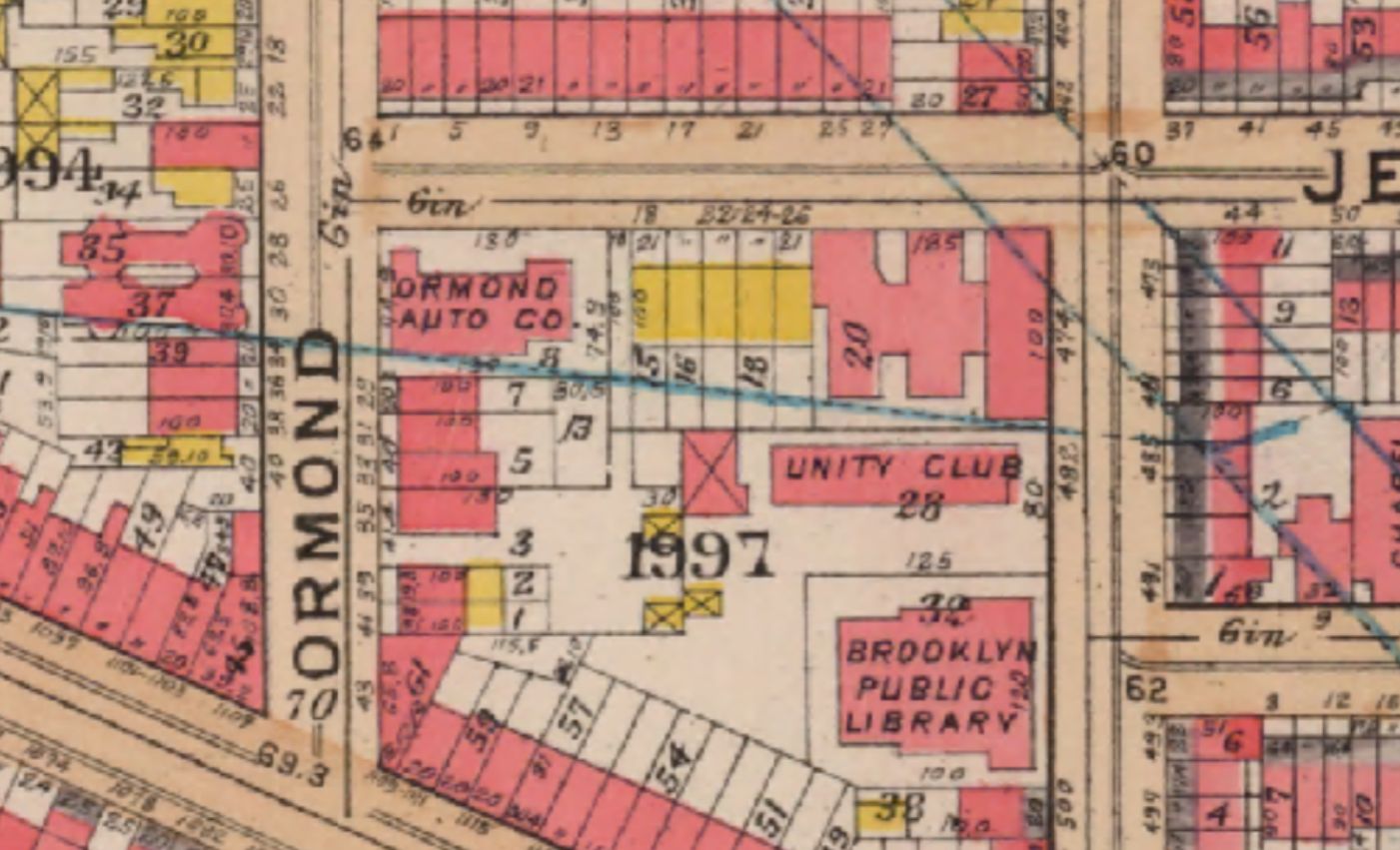
At some point, Wilfred and one of his bowling partners, secretary of the St. James Bowling Club, Robert W. Haff, had hatched the idea to bring a new and exciting automobile company to Brooklyn. This new-fangled piece of machinery was in its infancy, but more and more people – especially those with expendable cash – were beginning to buy them.
So, in 1903, Wilfred, Haff and a man by the name of Hiram Lyons, incorporated the Ormond Automobile Company on Ormond Place, near Bedford Avenue. They could have found or built a contemporary showroom for the company, but they were looking to sell to a niche and exclusive market.
So, they determined that they should have a special building in a high-profile spot to ensure that they stood out and captured the attention of exclusive buyers.
In May of 1903, the three incorporators leased a building at the cross-streets of Ormond Place and Jefferson Avenue that they would completely re-outfit to suit their automobile company. In the process they had found the least likely place to open a garage.
A church.
A HOME FOR GOD’S FLIVVERS
Nowadays, unused churches are being remade as condos and other types of housing. In 1903, though, this transformation would be nothing short of sacrilegious. But the space worked, there were no limits on its use, and the “out of the box” thinking was briefly to be a pubic relations coup.
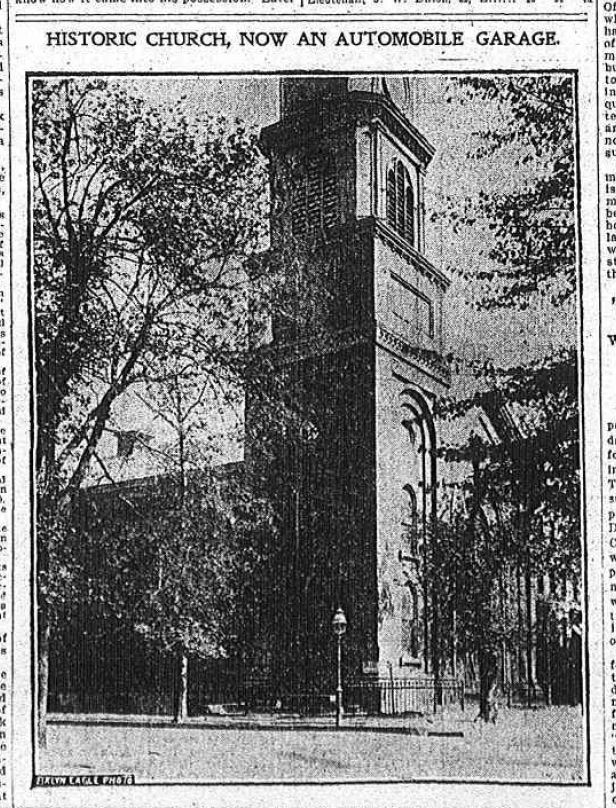
The three raised the funds amongst themselves to start their company. Capital was put up of $7500. They determined that Wilfred would be the president, Lyons would be the secretary, and Haff would be the treasurer.
An article in the Brooklyn Daily Eagle noted that Wilfred’s venture represented “the latest enterprise in this promising field.
“The old brick church as it is familiarly known,” the article went on, “was built in 1843 and for many years known as the Central Congregational Church. It then became the worshipping place for an Episcopal congregation and during the closing days of its somewhat checkered career was occupied as a house of worship by a colored congregation.”
Renovations began in June of 1903 on the church’s ground floor, which would provide, when finished, 8000 square feet of space, which accommodated for a capacity of 150 automobiles.
In addition, “an electric charging plant capable of charging six machines at the same time,” was planned, for the Ormond Automobile Company was not going to sell just gasoline powered automobiles; they were also going to showcase the future of driving – the electric car!
“At the top of the belfry,” continued the article, “will be an immense electrical sign, containing 150 lights. Another sign which will be large enough to attract attention from Flushing Avenue to the Boulevard will be placed at Bedford and Jefferson avenues.
THE JACKSON ’05
The first automobile that the Ormond Automobile Company represented in 1905 was a touring car from the Jackson Automobile Company. In ads from 1906, Ormond is touting the Jackson Touring Car, whose motto was “No sand too deep – no hill too steep.”
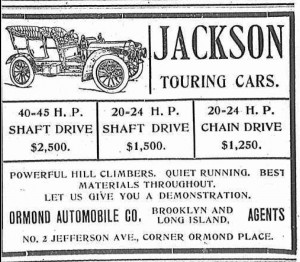
Other Ormond Automobile Company ads noted that the Jacksons were, “Powerful hill climbers,” “quiet running,” and made of the “best materials throughout.”
In 1907, the Ormond Automobile Company would switch ownership and represent a new automobile company (and line of autos), the Columbia Automobile Company, which also made gasoline- and electric-powered cars.
POSTSCRIPT
Wilfred Burr’s Ormond Automobile Company was eventually sold around the time of the Panic of 1907. Wilfred filed for bankruptcy in 1908. By 1910, the Ormond Automobile Company was out of business. And in 1913, Wilfred’s partner, Haff, would be sued on notes given to the bank in the transaction of business on behalf of the Ormond Automobile Company.
For a few years after 1913, a company much like today’s UPS used the building as a logistical and transportation hub afterwards, and by 1917 merchants were selling wholesale stock to “streetmen” from the church. (Streetmen were those hawkers who sold items on the street, and at fairs and carnival, either from stalls or movable carts.)
By 1922, the building had returned to its original purpose when the St. Peter Claver Roman Catholic Church moved in. The church building, originally located on Ormond Pl., and now on Claver Pl., still exists in a moderately altered form. The steeple has come down and the façade altered somewhat, but the profile of the original Central Congregational Church can still be made out in the new structure. The St. Peter Claver Roman Catholic Church, the first African American Roman Catholic Church in the Brooklyn diocese, has been housed in the building since 1922.
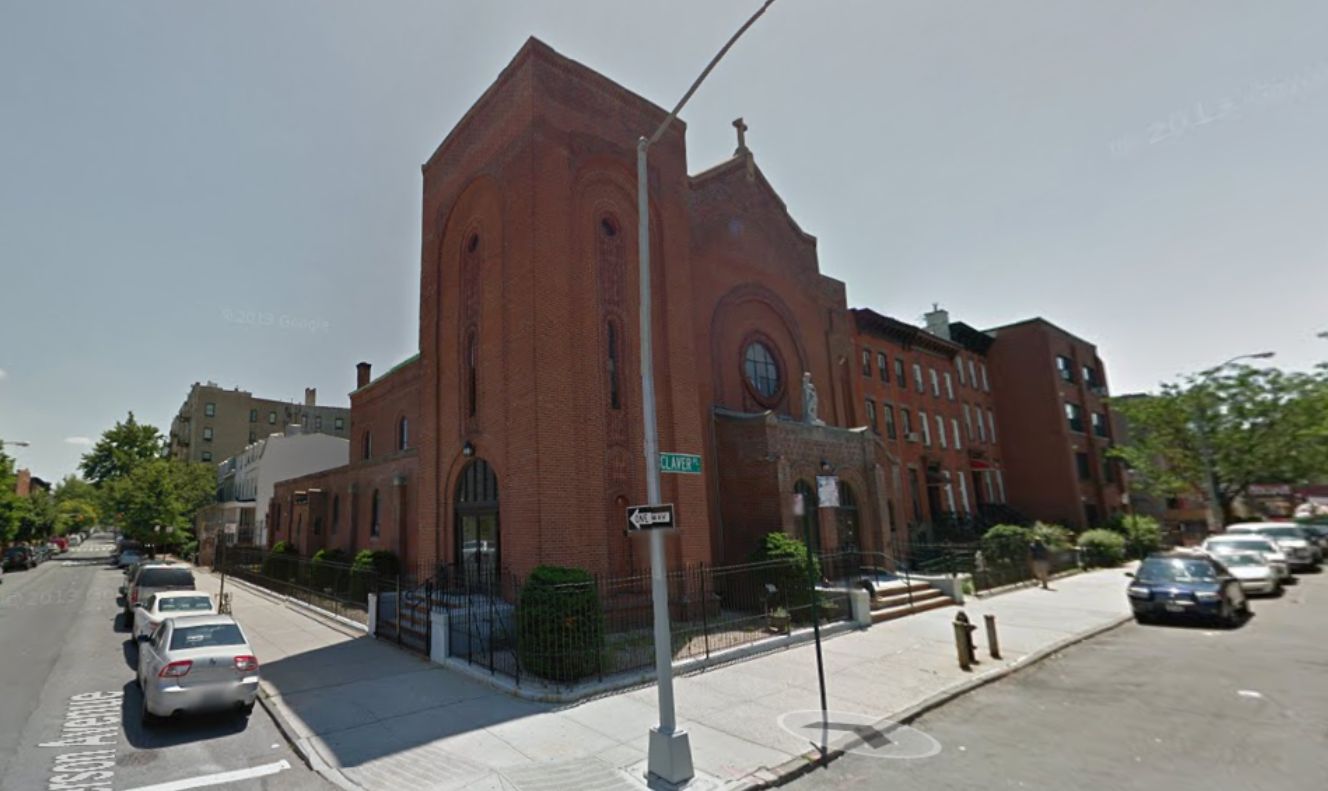
———————————————————————————————————————–
 Brownstone Detectives is an historic property research agency. Our mission is to document and save the histories of our clients’ homes. From our research, we produce our celebrated House History Books and House History Reports. Contact us today to begin discovering the history of your home.
Brownstone Detectives is an historic property research agency. Our mission is to document and save the histories of our clients’ homes. From our research, we produce our celebrated House History Books and House History Reports. Contact us today to begin discovering the history of your home.